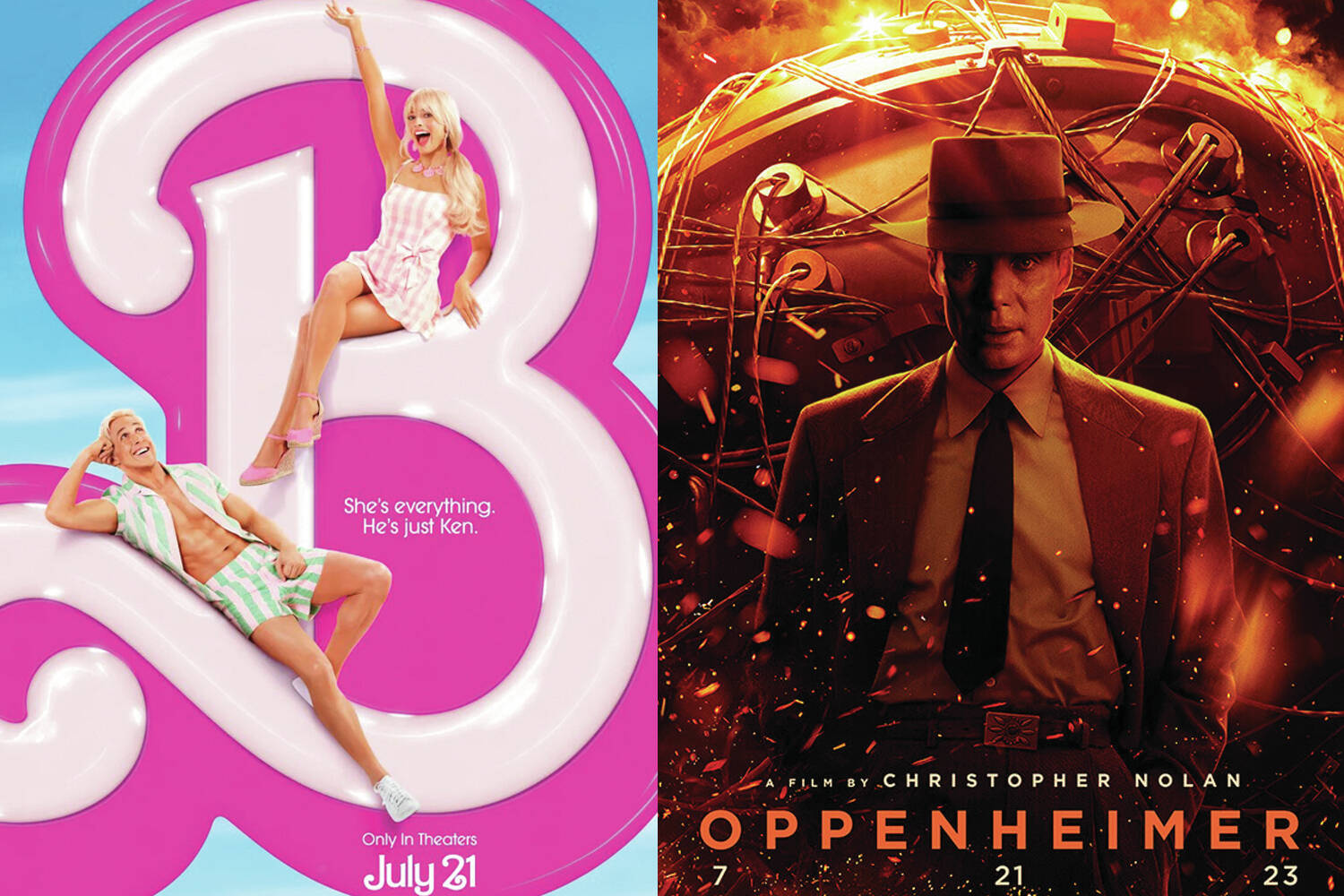The movies are in a weird place. Film and television writers and actors are striking as the industry contends with financial questions spurred by the advent of streaming services. Common complaint has been leveled at major studios for the abundance of sequels and remakes, themselves a result of the poor box office performance of just about anything else. The struggle extends to movie theaters contending with declining attendance exacerbated by a major shift in moviegoing habits that occurred during the COVID-19 pandemic.
Even as someone who once spent years working at a theater, who loves the film industry and who is more than excited to watch the 33rd film in the Marvel Cinematic Universe this fall, I’ve found my excitement flagging at times. I let a few of the summer blockbusters entirely pass me by this year.
Last weekend, my faith was restored. Last weekend, I took part in “Barbenheimer.”
“Barbenheimer” is a phenomenon borne of social media, which took two films by different studios, with radically different tones and by two of the best directors working in the space, and turned them into an unofficial double billing.
On Sunday, I saw Christopher Nolan’s “Oppenheimer,” a dour, three-hour-long biopic about J. Robert Oppenheimer, the “American Prometheus” who led creation of the atomic bomb during World War II. Then, devastated, I went to a nearby restaurant and ordered enchiladas. An hour later, I was back at the movie theater for Greta Gerwig’s “Barbie,” a hot-pink comedy adventure starring Mattel’s iconic doll where the villain is ultimately and explicitly “the patriarchy.”
The double feature, despite or perhaps because of how silly it is, totally worked — though I don’t know how quick I would be to jump at another opportunity to spend six hours in an auditorium.
“Oppenheimer,” at a run time of exactly three hours, about the Manhattan Project and its aftermath, was certainly not the film I was most looking forward to of the pair. That said, it’s the one I’ve been left thinking about the most. Cillian Murphy absolutely stuns as the titular physicist, and somehow a film with three hours of political hearings and conversations about theoretical physics was entirely gripping.
I confess to entering the theater largely unfamiliar with the details of Oppenheimer’s life and the creation of the bombs — I only know what this country did with them. The film still felt accessible, even as it dove into the science driving the horrible innovation and the somehow denser political climate of the era.
Driving sound design and a tense score by Ludwig Göransson keeps the momentum building to the obvious inflection point, but even after deployment of the weapon at the heart of the film it somehow goes on for another hour, to an even more crushing conclusion.
“Oppenheimer” is a film I’ve thought about every day since I’ve seen it. It’s a tightly designed window into a certain period of history, and comes across largely as a sharp critique of it. It considers potentially obvious themes of legacy, guilt and consequence, and Nolan shows his mastery of the craft in two standout showcases of sound and visuals that left me stunned. Its ending is poignant and impactful, and I would sit down to go through it all again right now.
Similarly tackling a sense of existential dread, Gerwig’s “Barbie” has long been one of my most anticipated films of the year. That’s even before I very recently saw Gerwig’s work as a writer and an actor in the stellar “Frances Ha,” and as a director — and also writer — on the equally impactful “Lady Bird” and “Little Women.”
“Barbie” didn’t quite floor me thematically the way Gerwig’s earlier films have, but it’s a visual marvel elevated with inspired performances by Margot Robbie and Ryan Gosling. It’s funny, it’s surreal, it maybe tries to tackle too much.
The film follows Stereotypical Barbie, played by Robbie. She lives a perfect life in Barbieland, a perfect society led by the Barbies who believe that since their creation by Mattel, they’ve inspired gender equality in the real world. Barbie is led to strike out into that real world when she starts experiencing thoughts about death — something she is told she’s picking up from the child who’s playing with her.
The film is earnest and clever, setting the bar high with an opening cited directly from “2001: A Space Odyssey,” and following that up with deep cut references to Barbie’s long and weird history, religious imagery, and heartfelt themes of motherhood, gender equality and ambition.
Ultimately, I think the film is stuffed with interesting ideas and concepts, to the point where not all of them get the time they need. The initial premise that leads Barbie to leave her home as she deals with her own thoughts of mortality is interesting, but then it takes a back seat as Gosling’s Ken is infected with toxic masculinity and brings patriarchal ideas back to Barbieland. There’s a bizarre subplot that positions Mattel’s Board of Executives as somewhat villainous overlords, but they don’t ultimately play much of a role in the story at all.
“Barbie” is charming and fun; it’s endlessly imaginative. It features silly dance numbers and incisive critique of modern culture. It’s a love letter to and a takedown of the iconic doll. Even lacking any direct attachment to the source material, I found a lot to enjoy.
In “Oppenheimer” and “Barbie,” two of the industry’s best directors deliver two radically different experiences. Together, they just made for the biggest weekend at the theater since the start of the pandemic, one of the biggest in history. Each is a work of art, but as unlikely supplements, they’re a comprehensive taste of some of the best and most creative work being done in the contemporary space.
Reach reporter Jake Dye at jacob.dye@peninsulaclarion.com.

